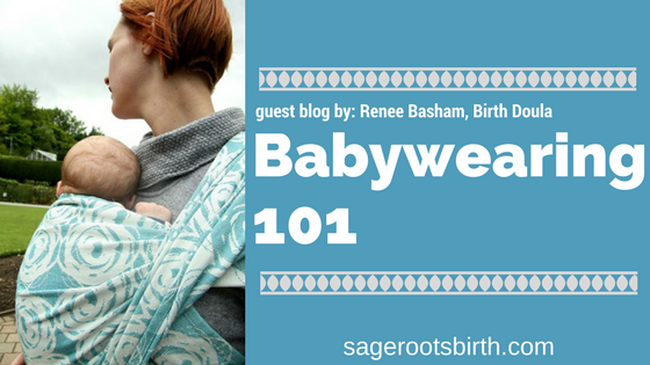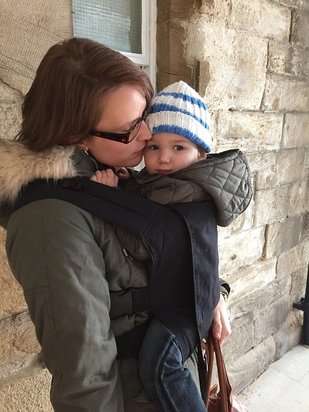|
by: Renee Basham, Birth Doula of Hope's Embrace As a new parent the two things you find you took advantage of the most are your hands. When you have a newborn, all of a sudden the things you used to be able to do with ease become monumentally more difficult while holding a newborn. Babies like to be held and they don’t care what you’re doing while you hold them as long as you continue to hold them while you’re doing it. What if I told you, new mama, that there was a way to get things done AND keep your baby close to you and happy? You would be ecstatic, wouldn’t you? Here it is. Are you ready? Babywearing. Yep, that’s it. Babywearing. It doesn’t matter what you use to wear your baby (there are a bunch of different carriers and it can be overwhelming to choose one!) Your baby just wants to be close to you. Babywearing is a traditional practice that is used in many cultures to keep your baby or toddler close to you while you conduct your daily activities. So what’s all the hype? Did you know babywearing promotes bonding, supports breastfeeding, can help combat postpartum depression, makes caregiving easier, and can be a Godsend for a high needs child. There are many studies showing that carried babies sleep, feed, and grow better. In fact, one study even found babies that are carried cry less. One of the greatest benefits of babywearing is that anyone can do it! You, as the parents, the grandparents, a nanny, a postpartum doula, anyone who cares for your child is able to produce the same benefits of babywearing. There are many different types of carriers, as I mentioned above, so it can be hard to choose one. However, you can ask yourself the following questions to help you decide:
Like any form of infant care, there are some safety guidelines you need to be aware of if you plan on carrying your baby. Make sure your child is able to breathe at all times. Airways need to be open. The best way to check for this is to carry your baby in an upright position high enough that you can monitor your baby’s breathing. It is recommended that infants are only held in a horizontal position if you are actively nursing. As soon as they are finished you should return the baby to an upright position. Make sure your carrier provides adequate support for your infant’s developing neck and back. Ideally, your baby should be held with the knees higher than the bottom with the legs in a squat position where the knees are supported. Always inspect the carrier for wear or damage before use. Examine the carrier for tears, loose stitching, or worn fabrics. Practice using the carrier, especially back carries, with a spotter and over a soft spot such as a bed until you are completely confident. Always use common sense while babywearing. You should not babywear in a situation where it is not safe to carry your infant in your arms.
develops relationships with each woman who comes to Hope's Embrace, regardless of income, history, race, or creed. Each of her clients is promised attentiveness in a judgement free zone that will allow them to make their own informed decisions related to birth.
To contact Renee: www.hopesembraceky.org [email protected] Facebook @hopesembraceky
0 Comments
Leave a Reply. |
LauraI'm the owner of Sage Roots. Woman, wife, mother, doula, writer, bookworm, hiker, gamer, and Christian. Categories
All
Archives
September 2022
|
Services |
Company |
|






